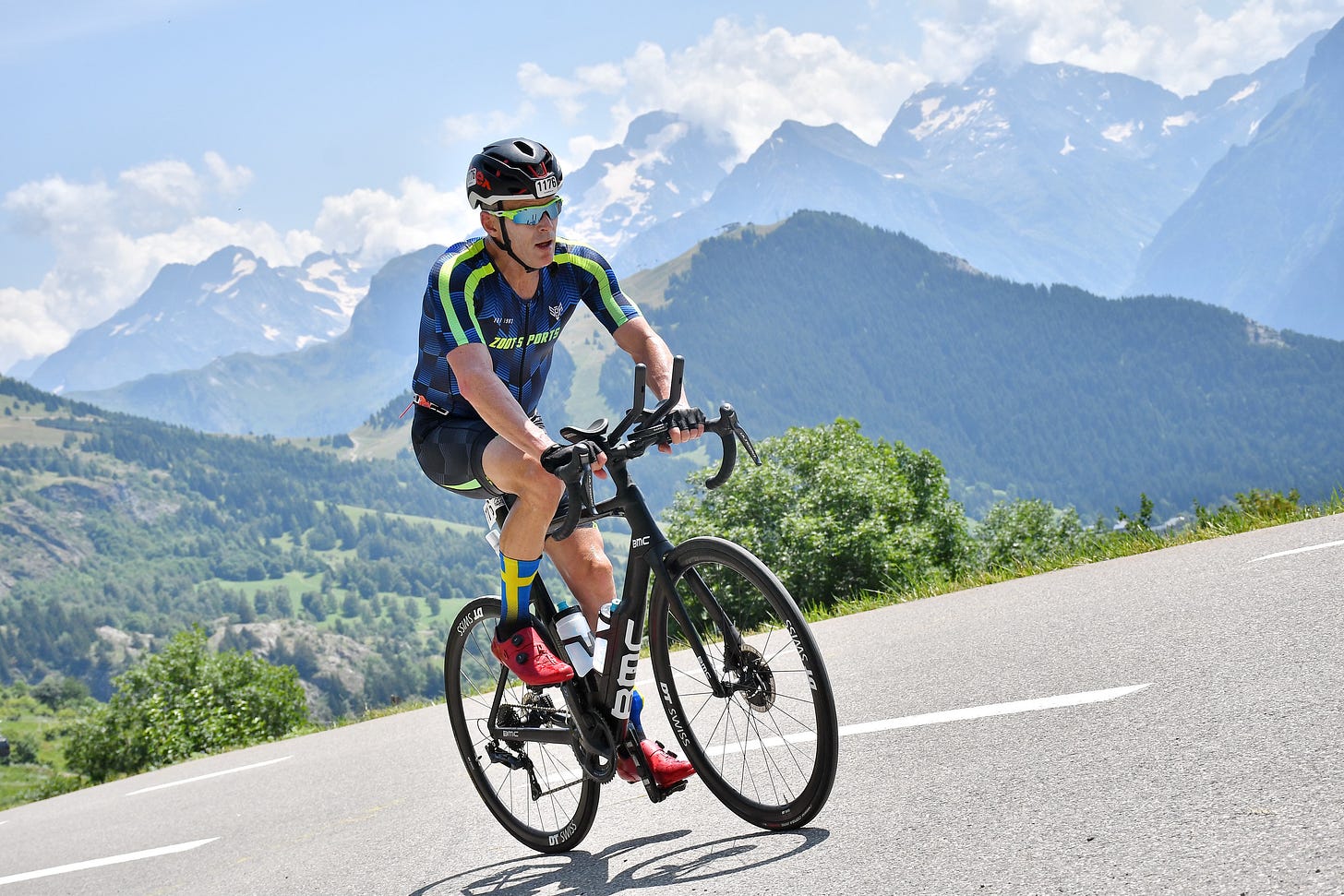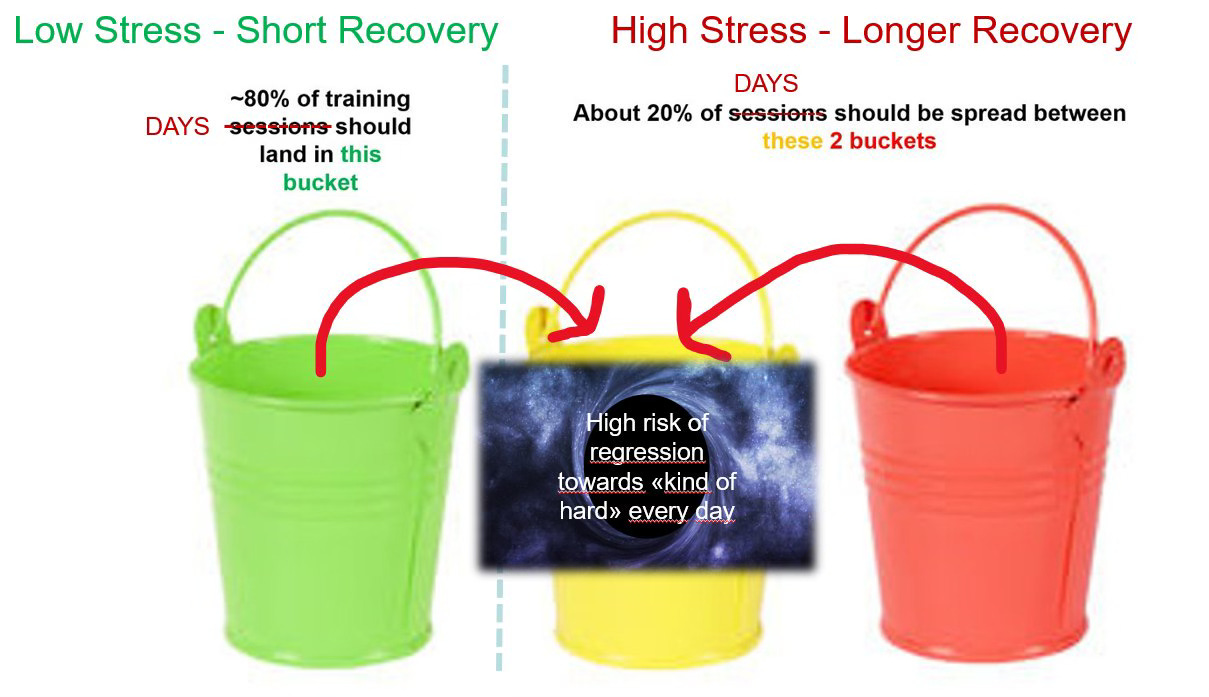Dynamic Loading - Part Two
For Competitive Athletes

You can find Part One here, it covers:
Having used Dynamic Loading to return to the level of a Top Amateur, I want to share additional tips,
Start With The End In Mind
The goal of athletic training is race performance.
Most everyone will agree with that statement.
Where we struggle is aligning our actions with our beliefs.
For example…
Posting on Socials about the importance of nutrition and recovery does not improve our nutrition and recovery.
For Dynamic Loading to be effective, we need a willingness to:
Preemptively Rest
Delay Key Workouts
Reduce Counterproductive Stress
Get Our Non-Training Life In Order
Repeat The Week
Prepare For The Specific Demands Of Our Event
These actions are difficult to achieve over long time horizons.
Dynamic Loading provides a sustainable advantage over the competition with no increase in time required.
It’s about adaptation and improvement.
Zombie Training & Fatigue
What’s Zombie Training? It’s training, while exhausted, to hit a number for our training log.
It might be a mileage number, a duration target or a goal score in Training Peaks.
By shifting our loading mindset to…
Enough Stress To Improve
Adapt
Repeat
…we free ourselves from the lure of Zombie Training.
The fact that we are feeling tired indicates we have done enough to create an adaptation.
As we move up the performance scale…
Novice
Developing
Competitive
Top Amateur
Pro / Elite
…we will notice our ability to recover while moving improves.
From a scheduling point of view:
The higher level athlete will do “more” on their Easy Days.
These days are less stressful than a smaller dose for a less experienced athlete.
When you look at “how much” a world-class athlete does, remember how little much of their program stresses them.
The higher level athlete will do “more” in their Loading Days. “More” in this sense is truly more:
A greater dose of Tempo & Red Zone work on their Peppy Days.
A longer Endurance Day.
Higher powers & paces across every training intensity zone.
At the sharp end, everyone trains a lot.
However, not everyone gets the full benefit from their work.
Higher Level Athletes Should Be More Binary
Because the higher level athlete needs a greater stress to “move the needle” their loading days will be more challenging.
This sets up an interesting game…
Higher level athletes need more stress to improve.
Stressful days are more likely to tip us over the edge.
Therefore, higher level athletes need to be more careful with scheduling.
In practice, playing the game (above) means daily load will diverge.
In a novice, a consistent daily load of 1 hour of training will improve fitness.
In a top amateur, that level of load may result in detraining.
In an elite, double that level of load may result in detraining.
As more stress is coming into the loading days…
Moderate, or maintenance, days will need to become lower stress.
Easy days will remain low stress.
The effect is a bifurcation in training days:
Stressful
Not Stressful
Stephen Seiler illustrates this effect with the picture (below).
Loading Means Stress
I wrote about Personal Recovery Rates. Please read that article, it’s free in my Personal Blog.
Not all stress is created equal.
Stress interacts in ways we cannot predict.
The art of training is having the Loading Days provide enough stress to move the needle, yet maintain the compounding effect of consistent loading.
Here, the TSS Model of Training Peaks2 limits our thinking.
Red Zone training can be far more disruptive than its score indicates.
Tempo training generates a range of fatigue responses.
Certain types of Green Zone training (for example, swimming and cycling) can generate high stress scores but are quickly absorbed without disruption to the training week.
Soreness is not captured by the TSS score and the nature of soreness varies.
Some soreness is a sign we’ve over done it.
In higher level athletes, soreness responds to Green Zone volume and can be trained through without risk of disruption.
Complicating our decision making is the same conditions can result in different outcomes.
If you’ve tried to repeat a “successful program” then you will have experienced this first hand, when the same plan produced different fatigue, fitness and performance outcomes.
Dealing With Plateaus
If you’re feeling good, enjoying your program and improving… stick with what’s working and let the gains compound. Avoid the temptation to ratchet stress upwards until the breaking point.
If you’re feeling run down, or not progressing, then consider three adjustments:
Training Targets
Stress Management
Intensity Dosing
Plateaus, frequent illness, chronic injuries, poor races, relationship breakdowns…
Are not bad luck
They are signs our approach is not working.
Our direct role in creating setbacks is tough to face.
Dynamic Loading offers us a better way.
Training Targets - Aiming even a little “too high” for volume, intensity or load will change the nature of the session.
Green Zone slides into Tempo
Tempo slides into Red Zone
Red Zone slides into the Extreme Domain
Use the tips in our Training Zones and Lactate Testing Chapters to dial in your targets.
Data-driven athletes can ensure sessions are targeted as intended, test lactate (a) late in the workout and (b) across the main sets of peppy workouts.
All athletes, should pay attention to how subjective perception changes across their sessions.
Stress Management
Are your low stress days, truly low stress?
Has your program slid into being “kinda hard” most days?
How many days a month are truly low stress?
When was the last time you took a deep recovery block (14+ Consecutive Easy Days) before you were sick or injured?
How often are you energy positive?
What’s it like “inside your head?”3
There are no right answers to the above questions.
By tracking our answers over time, we discover our breaking points.
By staying away from the edge, we avoid maladaptation and underperformance.
Intensity
What is the frequency, and dosing, of your more intense days?
Are you disrupting your physiology more often, and more deeply, than required?
If you are “training hard” and not seeing a performance lift then “going harder” is unlikely to be the solution.
Start by:
Cutting challenging set durations in half.
Inserting three easy days into every week.
Two back-to-back days.
An additional easy day in the middle of the remaining five days.
We can feel better, and improve performance, by reducing chronic stress.
Dynamic Loading, with its use of ample adaptation days, can increase our enjoyment of sport. Use these ample adaptation days to diversify identity and connect with friends.
When more ceases to work, consider less.
Humility, Persistence, Fortitude
Three traits have served me well in long course racing:
Humility - at the start.
Persistence - through the middle.
Fortitude - at the end.
We can strengthen these traits daily.
Humility - acknowledge we aren’t going to crush every day.
Have the wisdom to define winning as continual progress towards our individual potential.
Persistence - consistency as protocol.
Have faith that consistent loading will generate progress. Benchmark and test to generate evidence, and avoid errors.
Fortitude - accept that certain situations will be uncomfortable.
These situations are necessary for us to progress towards our ultimate potential.
They do not need to happen all that often.
Save your best for race day and remember we are playing a long game.
Back to Table of Contents
My favorite use case for HRV is for illness. See our article on Dealing With Sickness.
TSS = Training Stress Score. See my video that introduces the Training Peaks model.
Emotional challenges often have a root cause in chronic fatigue. Ask a close friend for their assessment of your emotional health. If the answer is “not great” then consider the role excessive exercise is playing in your mental health.



